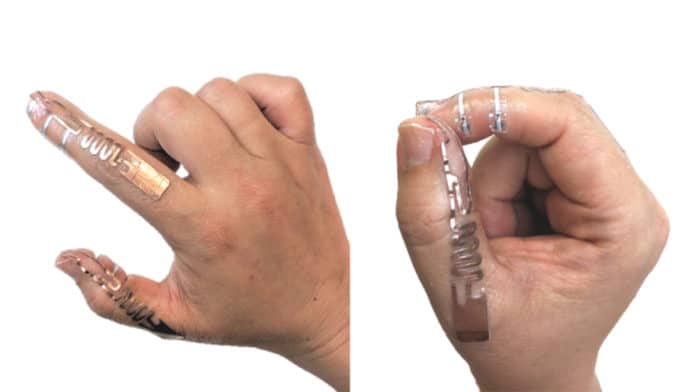Undoubtedly, in recent years, technology has taken a huge leap. Every day we can witness new proposals for innovation in the area. Some of them are more common such as updating operating systems that we already know, while some still manage to make us surprise.
This is the case of the latest creation of the team of computer scientists at the University of Waterloo. They have developed a laptop input device suitable for many situations simply by touching the fingertips in different ways. “Tip-Tap,” that’s the name of this device, which doesn’t require batteries or other modes of power.
It has the durability of old analog machines along with the functionality of the most advanced modern software. This inexpensive and battery-free device uses radio frequency identification (RFID) tags to sense when fingertips touch. Tip-Tap could, therefore, be added to disposable surgical gloves, allowing surgeons to access things like x-rays or planning diagrams in an operating room, without having to touch anything. They can control a computer without taking their hands away from the patient.
After testing the user with an initial wired prototype to evaluate performance, they addressed the problem of making it battery-free.
The prototype, developed in partnership with the National Research Council of Canada (NRC), essentially has an RFID antenna split in half and equipped each side with three chips to allow two-dimensional fingertip input, the first time this ever happened. Tip-Tap can be integrated into a glove or directly attached to the skin like a temporary tattoo (typically, to the index and thumb fingers – all the commands can be transmitted through them).
Once the fingers are put together, a full RFID antenna is created. It changes the ambient radio frequency – a minute change, which can be detected by a computer. Various functions can be programmed for this change, and the result is a very capable button-like input device.
“We used this design in two prototype Tip-Tap devices, a glove with a range of four meters, and an on-skin tattoo,” said Daniel Vogel, a professor in Waterloo’s David R. Cheriton School of Computer Science. “Such devices are useful for issuing simple commands when a user cannot easily hold an input device, and the usage context is a defined area — for example, factory workers, surgeons, or people exercising in a gym.”
“This is the only device of its kind that we’re aware of that doesn’t require a battery or cumbersome wires to make it work.”
As you can see, the arrival of Tip-Tap could present a radical change in the way we deal with technology and our equipment. This device aims to improve interactions without the user having to approach and physically touch the equipment.
